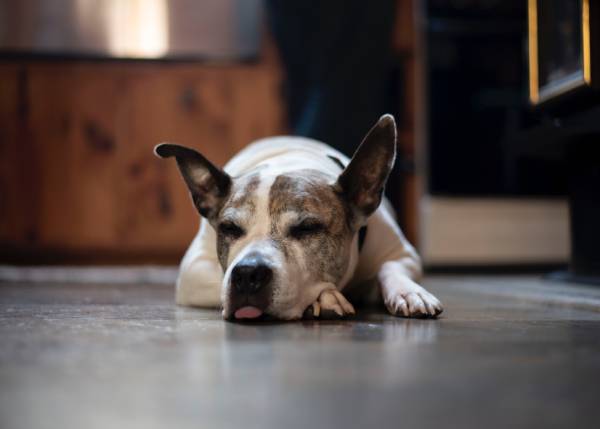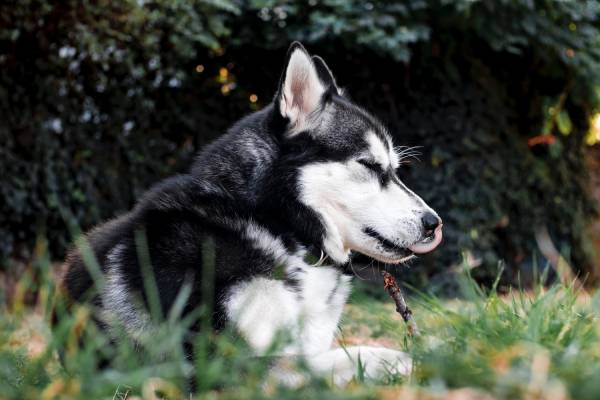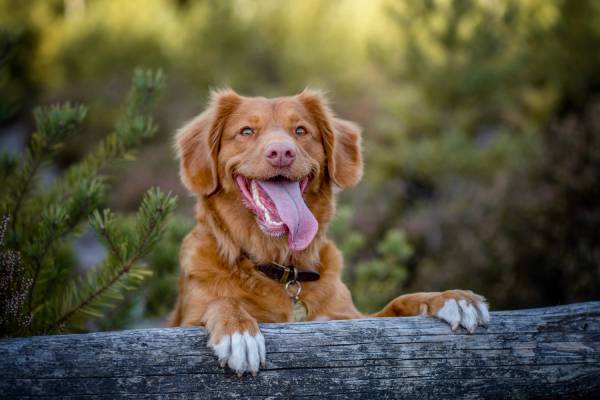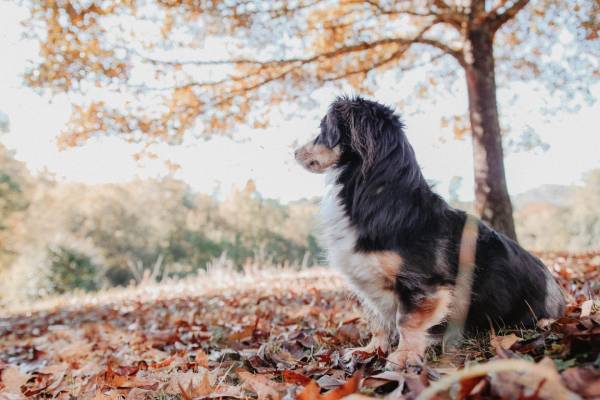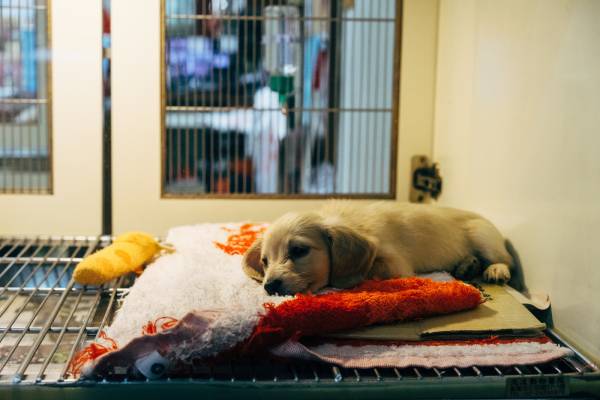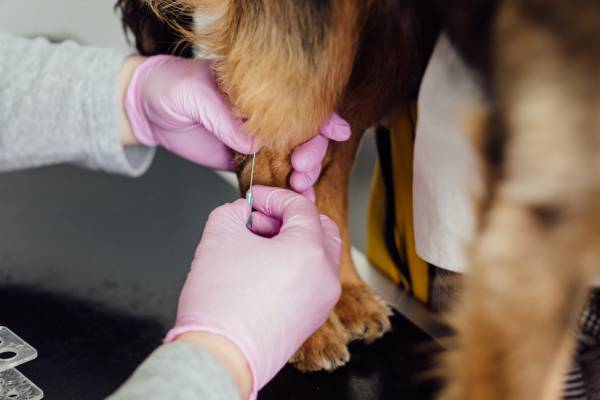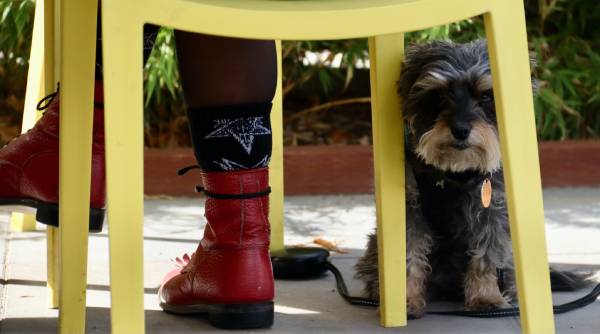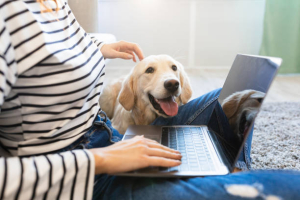Parvovirus, or parvo as it more commonly known, is an extremely contagious virus that primarily affects unvaccinated puppies, puppies who are partway through their vaccination course, or unvaccinated adult dogs. Discovered in 1967, the virus had spread worldwide by 1978 and by the late 1970s, a vaccine became available.
There is no cure for parvovirus and the virus is extremely resistant to disinfectants, alcohol, heat and the cold. Parvo is one of the most serious viruses a dog can get and infection can often be fatal, especially if treatment is not started quickly enough. Any dog owner that has been unlucky enough to have a dog with parvo can tell you what a horrible disease it is. Be sure to talk to your veterinarian about making sure your dog is protected from parvo.
What is Parvo?
Parvovirus is a DNA virus. There are several types of DNA viruses that affect humans including the herpes virus that causes cold sores, the varicella-zoster virus that causes chicken pox or shingles, and the deadly smallpox.
The parvovirus that affects dogs cannot be transmitted to humans and humans cannot transmit the human version of parvovirus to dogs. There have been cases of cats becoming infected with canine parvovirus, by they usually only exhibit mild symptoms.
How is Parvo Spread?
Parvovirus is spread in the faeces of an infected dog. The virus enters the environment from the faeces and is transmitted to dogs when they sniff the ground and the virus enters their mouth. The virus can also be transmitted on a dog’s feet or fur, or on the shoes or clothing of humans who have been in contact with an infected dog.
The virus is incredibly resistant, and can live in the dirt for months or even a year. It is less resistant to indoor conditions, surviving for around 1-2 months and it can be killed by a diluted bleach mixture. Because the virus is so tough and so hard to kill, dogs do not need to come into direct contact with an infected dog to pick up the virus.
Vaccinating your dog is currently the only way to protect them from parvo.
What Are the Symptoms of Parvo?
Parvo enters the dog’s body and immediately heads for their tonsils or lymph nodes. Once it has made enough copies of itself, it moves on to the small intestine and bone marrow. In the small intestine, it attacks the lining causing gastrointestinal symptoms. Once the virus has caused enough damage, the bone marrow becomes unable to produce enough white blood cells to fight off infection.
Symptoms in the early stage of infection (3-7 days after exposure):
- Lethargy
- Loss of appetite
- Fever
Symptoms once the disease has progress to the intestines:
- Severe vomiting
- Diarrhoea (often with blood)
Symptoms in the later stages of infection:
- Sudden collapse
- Hypothermia
- Rapid heart rate
If you suspect your dog has been exposed to parvovirus and is displaying any of the above symptoms, you should immediately contact your vet and tell them of your concerns.
How is Parvo Treated?
There is no cure for parvovirus. All that can be done for an infected dog involves supportive care which includes hospitalisation so they can be monitored, the administration of fluids, medications for vomiting, nutrition (often by tube feeding) and pain relief. If the virus has advanced to attack the bone marrow or small intestine, antibiotics may also be given to help fight off any secondary infections that may arise. In severe cases, a blood or plasma transfusion may be given.
Small dogs and puppies are most at risk of death from parvovirus due to dehydration and shock. The first 24 to 72 hours after symptoms appear are the most critical, and it is important that treatment begins as soon as possible to increase the chances of survival. With hospitalisation and supportive care, survival rates are around 75-80%.
How Can I Protect My Dog from Parvo?
VACCINATE! VACCINATE! VACCINATE!
Puppies need three rounds of vaccination before they are protected against parvovirus. A typical vaccination schedule to protect your dog against parvo might look something like this:
- First vaccine when they are between 6-8 weeks old
- Second vaccine when they are between 10-12 weeks old
- Third vaccine when they are between 14-16 weeks old
- One vaccine one year after the third booster
- As directed by your veterinarian
Two weeks after they have had their third vaccination, puppies are considered protected against parvovirus. Before they have had this third vaccination, they should not be allowed to walk on the ground outside of your own backyard.
If you enroll in a puppy preschool, you may be required to produce evidence that your puppy has commenced their vaccination course. It is also usually safe for puppies to be socialised with fully vaccinated adult dogs in a yard where no unvaccinated dogs have been.
Aside from vaccinating your dog, other ways you can protect them and other dogs from parvo include:
- Picking up after your dog immediately and disposing of their waste appropriately
- Regularly and thoroughly washing your dogs bedding and their food and water dishes
- Not socialising your dog until they are fully vaccinated (this applies to both puppies and adult dogs)
If your dog has had parvo, they can continue to shed the virus in their poo for up to ten days after they have ‘recovered’ so you should take extra precautions to prevent spreading the virus into the environment or to other dogs. It is unlikely that a dog that has had parvovirus could be infected again as they develop an immunity for several years after the infection.
Certain breeds are considered more susceptible for parvovirus including:
- Rottweilers
- Doberman Pinschers
- American Staffordshire Terriers
- English Springer Spaniels
- German Shepherds
- Labrador Retrievers
